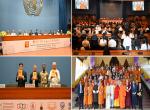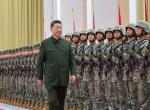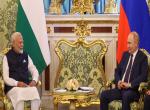Introduction
In recent months, the town of Chaman in Balochistan province has become the epicentre of intense protests, drawing national and international attention. The border towns of Chaman in Pakistan’s Balochistan province and Spin Boldak in Afghanistan’s province of Kandahar have become focal points of relentless protests following the implementation of a new visa policy by the Pakistani government. This policy, aimed at tightening border controls, has sparked significant unrest in both communities, revealing the deep-seated issues related to cross-border relations and its economic implications. Locals argue that the new policy disrupts their livelihoods and undermines cultural and economic ties with their co-ethnic brethren inhabiting the other side. However, the unrest also demonstrates the deeply rooted historical and geopolitical complexities surrounding the Durand Line, a contentious border that has long been a source of friction between Pakistan and Afghanistan. Therefore, the protests highlight the enduring impact of colonial-era decisions on contemporary regional politics and local grievances.
The Present Crisis
In October of the previous year, the Pakistani government decided to replace the long-standing practice of issuing special travel permits for individuals straddling the Durand Line with a single-document policy—a valid passport with a visa—effective from November 1, 2023. [1] By this new rule, Pakistan unilaterally abolished the century-old "Easement Rights," which had permitted members of certain communities living along the 19th-century Durand Line border to cross freely. [2] Again, in November, Pakistan’s national apex committee, consisting of both civil and military officials, ruled that only individuals with valid passports and visas would be permitted to cross the border. [3] Previously, Pakistanis and Afghans could cross the border by presenting either a Pakistani or Afghan national identity card, locally called tazkira that guaranteed free travel. [4] Therefore, the ordeal resulted in months-long protests by locals, businessman, traders and political parties as the unrestricted movement across the border enabled many residents to support/ sustain themselves by transporting/trading goods between the two neighbouring countries. The new policy has faced strong criticism from the Pashtun communities on both sides of the border (especially from the Achakzai and Noorzai Pashtun tribes that consist of the majority of residents[5] in the arid desert of Chaman-Spin Boldak region), who argue that it has negatively impacted their livelihoods leading to significant financial losses. [6] It is worth noting that the Chaman border crossing is one of the busiest crossing points between Pakistan and Afghanistan. The Taliban's interim government in Kabul has also condemned the policy, [7] highlighting its considerable effect on the fragile economy of the border region. Acting Afghan Minister of Borders and Tribal Affairs Noorullah Noori went further by labelling the Durand Line to be an “imaginary” border, claiming it does not officially represent the boundary between the two nations. [8] His remarks echoed those of Sher Mohammad Abbas Stanikzai, the Taliban's Deputy Minister of Foreign Affairs, who firmly asserted that Afghanistan will never recognize the Durand Line and that Pakistan cannot enforce the requirement of visas and passports for the border communities. [9]
Chaman-Spin Boldak has traditionally been a crucial trading hub, with extensive cross-border commerce connecting Pakistan and Afghanistan. It is reported that the new visa policy has significantly hampered trade especially the informal trade, leading to economic losses for local businesses and thus exacerbating unemployment in the region. Moreover, many residents of the region also have familial and cultural ties across the border. The restrictive visa policy has disrupted these connections, making it difficult for families to visit each other and for local communities to maintain their cross-border linkages. However, Pakistani officials have stated that the restrictions are essential for security reasons, as the country faces a rise in cross-border militant activities since the Afghan Taliban took control of Kabul in mid-August 2021. According to the Pak Institute for Peace Studies (PIPS), the number of terrorist attacks in Pakistan has dramatically increased by 73% during the first 21 months following the Taliban's seizing power in Afghanistan, compared to the same period prior to their ascent to power. [10] The report further indicated that the provinces of Khyber Pakhtunkhwa (KP) and Balochistan have witnessed a surge of terrorist incidents by 92% and 81% respectively. [11] However, while officially the new visa policy is intended to address these security issues and regulate illegal migration, locals argue that it disproportionately affects ordinary people rather than addressing the root causes of security concerns. They feel that the policy's impact on daily life and commerce outweighs its intended benefits.
Exploring the “Gates of Friendship”: Navigating Historical Ties & Modern Challenges at the Durand Line
Pakistani officials first imposed restrictions on the border crossing following the U.S. military invasion of Afghanistan in 2001. The border between Afghanistan and Pakistan, referred to as the Durand Line, has three official crossing points. Two of the most notable are Torkham in the east and Spin Boldak in the south; with Ghulam Khan being the third. The gates marking the southern border are labelled as “the Gates of Friendship,” in Pashto which translates to “De dosti darwaza.”[12] The gate was built in 2003 under a mutual agreement between former Kandahar governor Gul Agha Sherzai and the Pakistani government, allowing pedestrians from both sides to legally cross the border. [13] Historically, crossing this border usually did not necessitate any international legal documents, such as a visa or passport. However, this changed gradually after the 2014 attack on the Peshawar Army Public School by extremists aligned with Tehrik-e Taleban-e Pakistan (TTP), who were accused of taking shelter in Afghanistan. Following this incident, the Pakistani government cautiously increased border security measures. Moreover, during its Zarb-e Azb military operation in North Waziristan in June 2014, the Pakistani government also shut down one of the official border crossings, Ghulam Khan[14] which became fully operationalized only in 2019. [15] In June 2016, the Pakistani government started enacting stricter border control efforts in both Spin Boldak and Torkham. [16] In late May 2016, Islamabad officially introduced passport and visa requirements for entry into Pakistan via the Torkham gate in Nangrahar. [17] In Spin Boldak, while legal documents were still not required, the regulations for crossing the border were made stricter. [18] Few residents of Chaman district in Pakistan and Spin Boldak district in Afghanistan were also issued a basic document by the Pakistani government to cross the border known as a "border pass" which remained valid for three months but was also renewable. [19] No doubt sometimes the residents on both sides could easily cross the border check posts without any documents by paying bribes to the border authorities. However, things became further complicated in October last year with Pakistan’s introduction of the single document policy at the border.
According to a former Pakistani ambassador to Afghanistan, Rustam Shah Mohmand, there are 235 crossing[20] points[21] along the Afghanistan-Pakistan border with 18 unofficial motorable crossings. [22] A 2017 survey report from the International Organisation for Migration (IOM) estimated that Torkham sees about 20,000 crossings per day, while Spin Boldak/Chaman witnesses between 25,000 and 30,000. [23] Many Afghans cross the border for work or business activities, while others commute to visit family, as millions of Afghan refugees still reside in Pakistan. [24] Some also cross the border to Pakistan for medical treatment or education. [25] Additionally, Pakistani businesspeople and daily labourers often travel to Afghanistan, especially from Chaman district, as numerous residents of the district run/ have their shops, agricultural land, and businesses in Spin Boldak. [26] In 2005, Pakistan announced for the first time its intention to construct a 2,400-kilometer fence along its border with Afghanistan to prevent armed militants and drug smugglers from crossing between the two countries. [27] However, Pakistan’s decision in 2017 to fence the entire border, a project which is now on the verge of completion, has physically split primarily the Pashtun communities occasionally leading to clashes among the tribesmen, Afghan border guards, and Pakistani troops. [28]
Chaman Sit-In Protest: Voices for Change
In Chaman-Wesh (Wesh is the town on the Afghan side of the Spin Boldak district) border the protests erupted soon after the announcement of the ordeal on the one document regime last year—a decision that permanently changed the lives of the 1.2 million people of Chaman. [29] Protesters from the Laghari community, who were daily wage workers involved in cross-border trade, were leading the protest movement. [30] A coalition of political parties from Chaman, including Jamiat Ulema-e-Islam, Balochistan Awami Party, Pakhtunkhwa Milli Awami Party, Jamaat-e-Islami, Mazloom Olsi Tehreek, and Pakistan Muslim League-Q, also joined forces with civil society and local residents in the sit-in. [31] In the month of May this year, Tehreek-i-Tahafuz Ayeen-i-Pakistan (TTAP), a six-party opposition alliance, blocked all national highways connecting Balochistan with neighbouring provinces in support of the participants of the Chaman protests. [32] However, this relatively non-violent protest turned violent in June following the arrests of leaders of the sit-in protests by security forces, resulting in injuries to at least 56 protesters from tear gas shelling. [33] Additionally, over 17 security officials were hurt due to stone-pelting by the protesters. [34] As a result, the authorities suspended internet and communication services in the district for several days. [35] Following three days of violent demonstrations, the situation normalized only after tribal elders and political leaders, led by Mufti Qasim and Muhammad Hasan, intervened and mediated negotiations with Chaman Deputy Commissioner Athar Abbas Raja, leading to the dispersal of the protesters. [36] Despite this, the protesters maintained their sit-in on the Chaman-Kandahar highway close to the Pakistan-Afghanistan border. [37] Finally in July this year, the demonstrators concluded their nine-month sit-in protest following eight rounds of negotiations[38] between Pakistan’s government/military leadership and the protesters, reportedly facilitated by former Balochistan caretaker interior minister Inayat Ullah Kahan Kasi. [39] The protest organizers claimed that the government had rolled back the stricter visa regulations for cross-border trade; however, from the government’s side, no official confirmation was released about the reversal of its October 2023 order. [40]
Resurgence of the Chaman Protest Movement: Historical Grievances & the Renewed Voices for Justice
In August last month, the protesters resumed their demonstrations after a 23-day pause, as their demands had still not been addressed. [41] The protests of the four nationalist parties and business organizations restarted in Chaman on the 13th of August where a large number of people participated. [42] The Chaman protest includes a range of groups, such as the Awami National Party, Pakhtunkhwa National Awami Party, Awami Pakhtunkhwa Party, Pakhtunkhwa Liberation Movement, [43] National Democratic Party, Pashtun Tahaffuz Movement (Pashtun Protection Movement), along with several traders and transport organizations, [44] making this protest movement overtly political. The protest organizers declared that this time their demonstrations would be more extensive, [45] asserting that they do not recognize the Durand Line as an international boundary. [46] Members of the Chaman protest movement also criticized the Pakistani security forces for transforming the Pashtun areas into war zones. [47] Mahmood Khan Achakzai, leader of the Pakhtunkhwa Milli Awami Party, further claimed that the Pakistani government aims to suppress the Pashtun population in the country. [48] He added that the Pashtuns will never accept visas and passports for crossing at the Spin Boldak-Chaman point along the Durand Line, as people do not require a passport to enter their own land. [49] During the 56th regular session of the UN Human Rights Council in Geneva this year, Fazal-ur-Rehman, a PTM representative in Europe, also voiced concerns about human rights abuses against the Chaman protesters. [50] He emphasized that the Pakistani state has been disregarding the legitimate concerns of the Pashtun community for years now.
All these statements highlight the long-standing grievances of the Pashtun people, which have never been seriously addressed by the state of Pakistan. Moreover, the core issue stems from the artificial demarcation of the Durand Line by the British in 1893 for geopolitical purposes, which divided the Pashtun population into two parts. The problem aggravated with the partition of the subcontinent and the independence of Pakistan as the border cut through the heart of the Pashtun community, dividing families and tribes between Pakistan and Afghanistan, having severe implications for their livelihood and socio-cultural structures. This division has fostered a sense of disenfranchisement among the Pashtuns, as their cultural and political aspirations are frequently overlooked by the government of Pakistan, resulting in the development of long-standing grievances and a continual fight for recognition and rights.
Additionally, with the announcement of Pakistan's new military operation, Azm-e-Istehkam, the Pashtun region has braced for its potential impact, having already suffered greatly from past military operations, which has widened the divide between the state and its people inhabiting the frontier region. [51] Furthermore, with the PTM announcing a Pashtun grand Jirga on October 11, where decisions regarding the future of the Pashtun belt in Pakistan are anticipated, it is crucial for the Pakistani state to listen to the legitimate demands of the Pashtun community, including those of the Chaman border protesters. Otherwise, their grievances could escalate in a way that would be detrimental to the unity and integrity of the state of Pakistan.
Conclusion
Therefore, it can be concluded that the nearly year-long protests in Chaman originated from a combination of economic hardship, political frustration, and unresolved historical issues underscoring a complex interplay of local grievances and broader geopolitical/regional tensions. The movement has highlighted the persistent struggles of local communities for their rights and mobility. Chaman Protesters have voiced strong opposition to the one-document regime, which they believe hinders their economic opportunities and historical/cultural connections. Moreover, the movement has brought together diverse groups, highlighting their shared aspiration for a more inclusive and equitable policy framework regarding the border communities. As the protests continue, they not only seek to challenge the visa regulations but also emphasize the need for dialogue and greater understanding between the governments of Afghanistan and Pakistan. Ultimately, the movement reflects a broader struggle for identity, dignity, and the rights of border communities, reinforcing the importance of responsive governance in addressing the needs of all citizens.
References
[1] https://www.voanews.com/a/pakistan-tightens-entry-rules-for-afghan-travelers/7294362.html
[2] https://www.rferl.org/a/pakistan-border-afghanistan-protest-restrictions/32692454.html
[3] https://www.dawn.com/news/1790019
[4] https://www.dawn.com/news/1790019
[5] https://www.rferl.org/a/pakistan-border-afghanistan-protest-restrictions/32692454.html
[6] https://www.rferl.org/a/pakistan-afghanistan-protests-border/32933331.html
[7] https://www.rferl.org/a/pakistan-afghanistan-protests-border/32933331.html
[8] https://www.thepamphlet.in/english/taliban-terms-durand-line-illegitimate-calls-it-imaginary/
[9] https://www.thepamphlet.in/english/taliban-threatens-pakistan-with-repeat-of-1971-rejects-durand-line-as-official-border/
[10] https://www.dawn.com/news/1757192
[11] https://www.dawn.com/news/1757192
[12] https://www.afghanistan-analysts.org/en/reports/regional-relations/the-gates-of-friendship-how-afghans-cross-the-afghan-pakistani-border/
[13] https://www.dawn.com/news/127590/friendship-gate-opens-at-chaman-border
[14] https://www.afghanistan-analysts.org/en/reports/regional-relations/the-gates-of-friendship-how-afghans-cross-the-afghan-pakistani-border/
[15] https://www.mashaalradio.com/a/30118860.html
[16] https://www.afghanistan-analysts.org/en/reports/regional-relations/the-gates-of-friendship-how-afghans-cross-the-afghan-pakistani-border/
[17] https://reliefweb.int/report/afghanistan/durand-line-and-fence-how-are-communities-managing-cross-border-lives
[18] https://www.afghanistan-analysts.org/en/reports/regional-relations/the-gates-of-friendship-how-afghans-cross-the-afghan-pakistani-border/
[19] https://www.afghanistan-analysts.org/en/reports/regional-relations/the-gates-of-friendship-how-afghans-cross-the-afghan-pakistani-border/
[20] https://tribune.com.pk/story/1123645/deepening-pak-afghan-divide
[21] https://www.afghanistan-analysts.org/en/reports/regional-relations/jihadi-commuters-how-the-taleban-cross-the-durand-line/
[22] https://www.afghanistan-analysts.org/en/reports/regional-relations/the-gates-of-friendship-how-afghans-cross-the-afghan-pakistani-border/
[23] https://www.afghanistan-analysts.org/en/reports/regional-relations/the-gates-of-friendship-how-afghans-cross-the-afghan-pakistani-border/
[24] https://www.afghanistan-analysts.org/en/reports/regional-relations/the-gates-of-friendship-how-afghans-cross-the-afghan-pakistani-border/
[25] https://www.afghanistan-analysts.org/en/reports/regional-relations/the-gates-of-friendship-how-afghans-cross-the-afghan-pakistani-border/
[26] https://www.afghanistan-analysts.org/en/reports/regional-relations/the-gates-of-friendship-how-afghans-cross-the-afghan-pakistani-border/
[27] https://tribune.com.pk/story/1126353/1100km-trench-built-alongside-pak-afghan-border-balochistan
[28] https://reliefweb.int/report/afghanistan/durand-line-and-fence-how-are-communities-managing-cross-border-lives
[29] https://www.dawn.com/news/1823705/180-days-of-protest-why-are-the-pakhtuns-in-chaman-encamped-on-the-pak-afghan-border
[30] https://thekhorasandiary.com/en/2024/06/11/pakistans-new-visa-regime-with-afghanistan-sparks-protests-in-balochistan
[31] https://amu.tv/69927/
[32] https://www.dawn.com/news/1834948
[33] https://efe.com/en/latest-news/2024-06-07/tension-runs-high-after-protesters-clash-with-forces-in-pakistans-balochistan/
[34] https://www.dawn.com/news/1838299
[35] https://thekhorasandiary.com/en/2024/06/11/pakistans-new-visa-regime-with-afghanistan-sparks-protests-in-balochistan
[36] https://www.dawn.com/news/1838299
[37] https://www.dawn.com/news/1838740
[38] https://tribune.com.pk/story/2481737/chaman-border-opens-after-10-months
[39] https://www.voanews.com/a/traders-end-monthslong-protest-at-pakistan-afghan-border-crossing/7712792.html
[40] https://efe.com/en/latest-news/2024-07-21/protesters-end-sit-in-over-pakistans-afghan-border-visa-policy/
[41] https://tolonews.com/index.php/afghanistan-190229
[42] https://www.thepamphlet.in/english/pakhtunkhwa-national-awami-party-threatens-to-intensify-protests/
[43] https://tolonews.com/afghanistan-190728
[44] https://www.thepamphlet.in/english/pakhtunkhwa-national-awami-party-threatens-to-intensify-protests/
[45] https://tolonews.com/index.php/afghanistan-190229
[46] https://tolonews.com/index.php/afghanistan/provincial-190586
[47] https://tolonews.com/index.php/afghanistan/provincial-190586
[48] https://tolonews.com/afghanistan-189376
[49] https://tolonews.com/afghanistan-189376
[50] https://www.aninews.in/news/world/europe/pashtun-protests-expose-human-rights-abuses-under-pakistani-visa-rules20240629140153/
[51] https://thediplomat.com/2024/07/pakistans-new-military-operation-alarms-pashtuns/
(The paper is the author’s individual scholastic articulation. The author certifies that the article/paper is original in content, unpublished and it has not been submitted for publication/web upload elsewhere, and that the facts and figures quoted are duly referenced, as needed, and are believed to be correct). (The paper does not necessarily represent the organisational stance... More >>
Image Source: https://i.dawn.com/primary/2024/04/011026372915edc.jpg











Post new comment